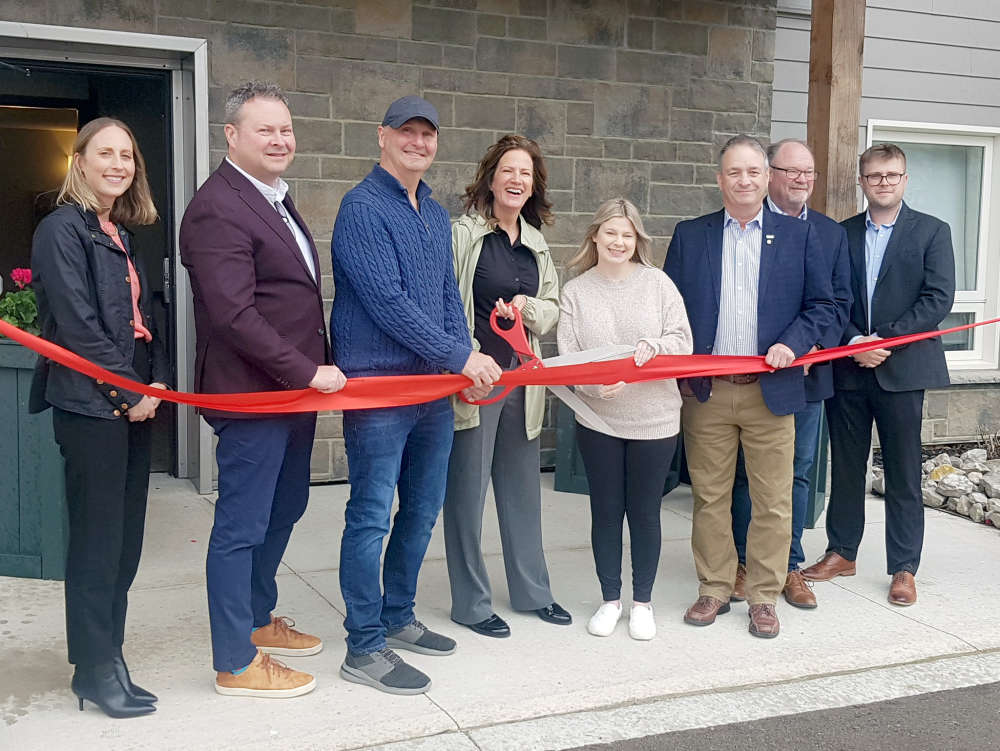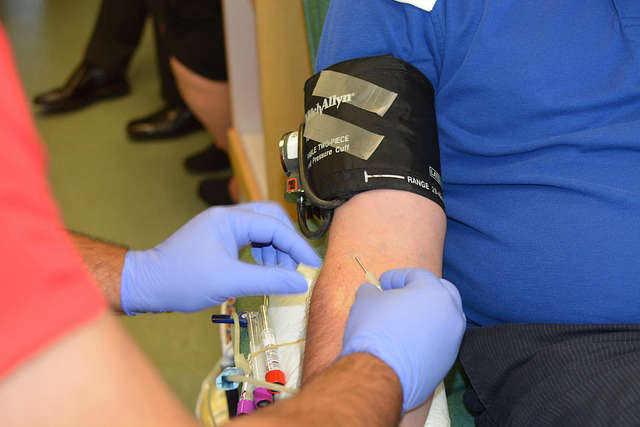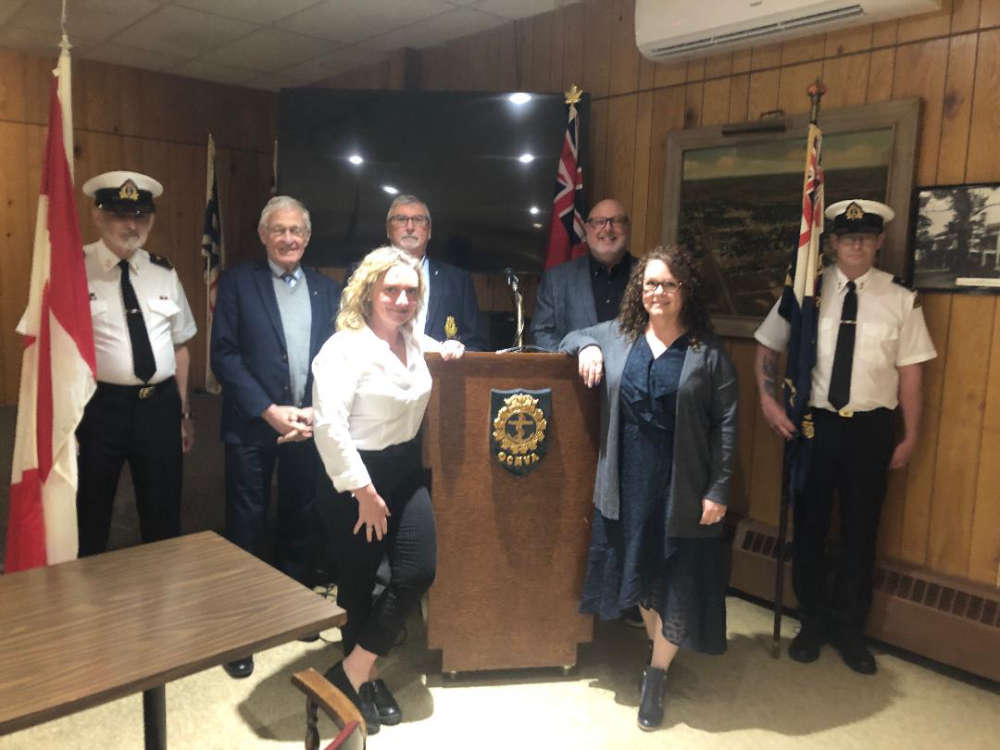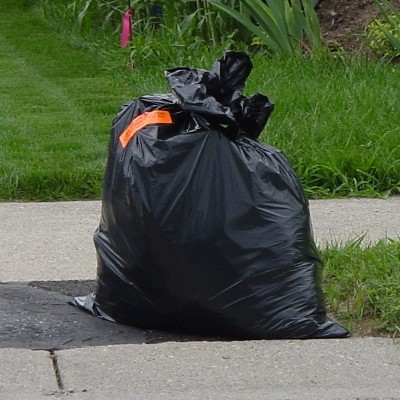
Sodium and fluoride level update builds on education outreach campaign which county implemented last fall.
WOODSTOCK -- Oxford County Public Health and Emergency Services issued their annual health information advisory on the safety of municipal drinking water systems. The advisory also helps to raise awareness of health considerations for some residents.
Peter Heywood, Program Supervisor of Health Protection at Oxford County Public Health, says this stems from an education outreach campaign which the county implemented last fall. He says they're targeting those on sodium restricted diets and dental fluorosis in children in the latest update.
"Dental fluorosis is a condition which changes the appearance of teeth. We're recommending those who live in areas with higher elevated levels of fluoride to drink non-fluoridated bottled water for things like mixing baby formula, juice and other mixes when baking or cooking."
Bottled water, like tap water, must be sterilized when it is used to make baby formula.
Heywood says another tip is to remove naturally occurring fluoride from your drinking water is by incorporating reverse osmosis.
This week's Health Information Advisory is to advise residents, health care professionals and other users of the municipal drinking water system that fluoride levels in some communities in Oxford County have tested above the Maximum Acceptable Concentration of 1.5 mg/Litre
"Within the Health Information Advisory we've identified the communities which have elevated levels of fluoride including Brownsville, Ingersoll, Lakeside and Oxford South -- which encompasses Norwich Otterville and Springford," Heywood confirmed.
Heywood says while the County of Oxford does not add fluoride to drinking water -- it is naturally present at varying levels from local water sources.
The County of Oxford is required to test for fluoride samples in municipal drinking water every five years.
Some tips for those with elevated levels include a home treatment system to remove or reduce the fluoride content if there are young children in the home. Also, the use of charcoal filters does not remove fluoride -- only reverse osmosis can eliminate it from your drinking water.
Those on a diet restrictive on sodium intake might not think of water as a contributor to their daily sodium intake. The advisory is also shedding some light one how much sodium is in our drinking water.
Heywood says for healthy adults, the level of sodium in the water supply doesn't pose any health risk -- but those on a restrictive diet should be aware.
"The amount of sodium in two litres of drinking water within the communities here in Oxford County ranges from 47-to-175 mg per day. A person who's on a very restricted sodium diet could take in approximately 500 mg per day, someone on a mildly restrictive sodium diet could take in approximately 2,300-mg per day."
The advisory states if you or members of your family have kidney disease, heart disease, high blood pressure or liver disease, and need to restrict your salt intake because of those illnesses -- you should ask your physician or health care professional on how sodium in the water may affect your health.
The recommended range for sodium in drinking water is 20-milligrams per-litre or less. Whenever sodium levels are higher than recommended the Medical Officer of Health is required to inform health professionals in order to help people on sodium-restricted diets control their sodium intake.
Testing for sodium is carried out in each community in Oxford once every five years.
More can be found by visiting: http://www.oxfordcounty.ca/Home/Newsroom/News-Details/ArticleId/2403/Health-Information-Advisories



 New Coaches Coming to Tavistock Braves
New Coaches Coming to Tavistock Braves
 Norfolk OPP Investigation Leads to Charge
Norfolk OPP Investigation Leads to Charge
 U14 Girls Oxford Attack Continue Season
U14 Girls Oxford Attack Continue Season
 Province Increasing Speed Limit on 10 Sections of Highways
Province Increasing Speed Limit on 10 Sections of Highways
 EZT Strategic Plan Survey Closing Soon
EZT Strategic Plan Survey Closing Soon
 Realtors Care Food Drives Returns!
Realtors Care Food Drives Returns!
 Plattsville Celebrates New Housing Complex
Plattsville Celebrates New Housing Complex
 Two Have Licence Suspensions in Oxford
Two Have Licence Suspensions in Oxford
 False 9-1-1 Calls Hit Norfolk County
False 9-1-1 Calls Hit Norfolk County
 Woodstock Choralaires Hosting 70s Themed Show
Woodstock Choralaires Hosting 70s Themed Show
 Thamesford Tim Hortons Accepting Smile Cookie Preorders
Thamesford Tim Hortons Accepting Smile Cookie Preorders
 Three Vehicle Crash Investigation in Brant
Three Vehicle Crash Investigation in Brant
 News Poll: Blood Donation
News Poll: Blood Donation
 WCI Red Players Present: Concert for the Cure 2024
WCI Red Players Present: Concert for the Cure 2024
 Oxford Resident Charged with Shoplifting
Oxford Resident Charged with Shoplifting
 Earth Day is Celebrated in Woodstock
Earth Day is Celebrated in Woodstock
 One Man Charged after Fraudulent Activity
One Man Charged after Fraudulent Activity
 Norfolk OPP Catch Impaired Driver
Norfolk OPP Catch Impaired Driver
 Woodstock Navy Club Welcomes Universal Washroom
Woodstock Navy Club Welcomes Universal Washroom
 Oxford County Waste Survey Closing Soon
Oxford County Waste Survey Closing Soon



Comments
Add a comment